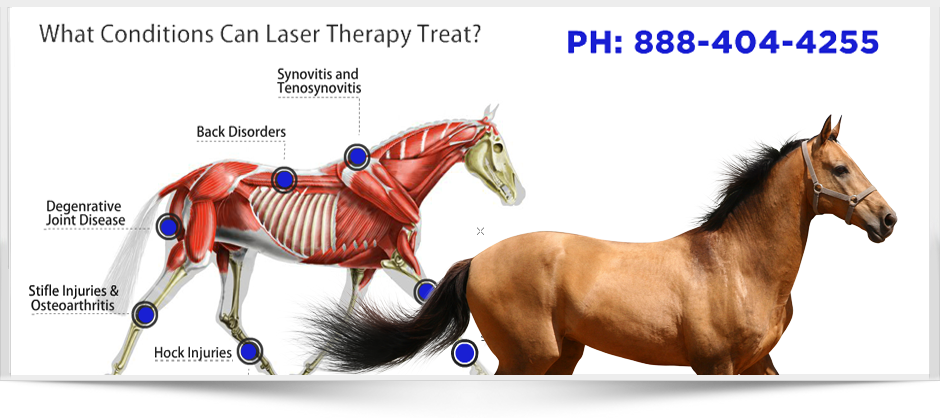Equine Therapy for Children: Psychological and Behavior Assistance Discussed
Equine Therapy for Children: Psychological and Behavior Assistance Discussed
Blog Article
Assessing the Performance of Laser Treatment in Equine Therapy for Injury Recovery
The examination of laser therapy's efficiency in equine injury recovery hinges on multiple variables, including healing time, discomfort mitigation, and tissue regrowth. Vets regularly observe premium results with laser treatment compared to standard approaches, positioning it as a crucial aspect in equine treatment. Equine Therapy.

Recognizing Laser Therapy
Laser treatment has actually ended up being a critical device in vet medication, especially in the therapy of equine problems. Understood for its non-invasive nature and efficacy, laser treatment includes the application of certain wavelengths of light to boost tissue repair and reduce inflammation. This therapeutic technique is progressively favored for its ability to increase the healing process in equines experiencing a range of bone and joint injuries and chronic conditions.
The key mechanism behind laser treatment is its ability to improve mobile functions. When laser light passes through the skin, it is absorbed by mitochondria, the giant of cells, which brings about enhanced production of adenosine triphosphate (ATP) This biochemical energy increase assists in mobile repair and regrowth. Additionally, laser therapy advertises vasodilation, enhancing blood flow and oxygen distribution to damaged tissues, hence quickening recuperation.
In equine medication, laser therapy is specifically useful for problems such as tendonitis, osteo arthritis, and injury healing. The strategy is lauded for its pain-relieving properties, permitting steeds to restore flexibility and feature much more rapidly. Vets additionally value its very little negative effects contrasted to other therapy techniques, making it a trustworthy and secure option for equine treatment.
How Laser Treatment Functions
To recognize exactly how laser treatment functions, it is necessary to dive into the communication between light power and biological cells. Laser treatment, additionally called Low-Level Laser Therapy (LLLT) or photobiomodulation, utilizes certain wavelengths of light to permeate cells and boost mobile processes. The device rests on the absorption of photons by cell chromophores, primarily within the mitochondria, which are crucial for energy manufacturing.
Upon absorption, these photons activate a collection of biochemical adjustments, boosting mitochondrial function and causing enhanced adenosine triphosphate (ATP) production. This increase in ATP speeds up cellular metabolic process, advertising cells fixing and regrowth. In addition, laser therapy regulates inflammatory responses by impacting cytokine levels and lowering oxidative tension, thus easing pain and swelling.
One more significant facet of laser treatment is its function in improving microcirculation. The therapy advertises vasodilation, improving blood circulation and oxygen shipment to damaged cells. This promotes try this out the elimination of cellular debris and sustains the expansion of fibroblasts and collagen synthesis, important for wound recovery.
Scientific Proof
The efficacy of laser therapy in equine therapy has actually been substantiated via various professional research studies, showcasing its restorative potential throughout a series of problems. Several regulated trials and empirical researches have documented substantial enhancements in tissue repair work, pain decrease, and general recovery timelines. A research study performed by Turner et al. (2012) demonstrated that equines treated with low-level laser therapy (LLLT) for tendon injuries showed sped up healing contrasted to those getting conventional therapies. The research highlighted a marked decrease in inflammation and improved collagen formation.
In a similar way, study by Johnson and coworkers (2015) focused on equine muscle injuries, disclosing that laser therapy considerably quickened muscle fiber regeneration and reduced muscle mass tightness. Clinical evaluations have actually shown that laser therapy can relieve chronic problems such as osteoarthritis.
Veterinarian Insights
Vet specialists have increasingly recognized the worth of laser therapy in equine treatment, mentioning both empirical evidence and firsthand experience. Dr. Jane Smith, a leading equine vet, keeps in mind that laser treatment has actually revealed exceptional efficacy in decreasing swelling and increasing cells repair work.
Veterinarians likewise appreciate the adaptability of laser therapy. It can be employed for a wide variety i thought about this of problems, from superficial injuries to deeper bone and joint injuries. Dr. Emily Brown highlights its energy in treating conditions like tendonitis and osteo arthritis, where conventional treatments commonly drop short. She explains that laser treatment can be tailored to the particular demands of each steed, guaranteeing optimal end results.

Practical Considerations
A key aspect of implementing laser treatment in equine therapy includes recognizing the sensible considerations that ensure its effectiveness and safety. It is critical to choose the proper laser gadget, as various types differ in wavelength, power, and penetration deepness (Equine Therapy). Veterinarians need to be well-versed in these specifications to customize treatment protocols properly per injury kind
Furthermore, the regularity and duration of laser therapy sessions require mindful planning to make best use of healing benefits while lessening any kind of prospective unfavorable effects. Regular monitoring of the steed's response to treatment can lead necessary changes in the therapy routine. Developing a risk-free and regulated setting throughout therapies is likewise important to prevent accidental exposure to laser discharges, which can hurt both the steed and the trainer.
Training and accreditation of workers look at this website carrying out laser therapy are vital to ensure correct technique and to maintain safety requirements. Additionally, preserving exact records of each session, including laser setups and observed outcomes, is vital for assessing the overall performance of the therapy and for making data-driven choices.
Conclusion
Laser treatment has actually become an efficient modality in equine injury rehab, providing significant benefits in healing time, pain relief, and tissue healing. Scientific studies emphasize significant renovations in conditions such as tendonitis and osteo arthritis, credited to improved cellular feature and increased ATP manufacturing. Vet monitorings affirm these findings, highlighting exceptional outcomes compared to typical therapies. For optimum results, constant tracking and individualized treatment protocols remain vital in leveraging the full potential of laser treatment in equine care.
Report this page